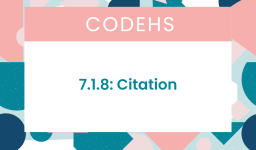Question: Which Of The Following May Help To Prevent Spillage?
Quick Answer: Follow procedures for transferring data to and from outside agency and non-Government networks.
Broad Description
Following procedures for transferring data to and from outside agencies and non-government networks can help prevent information spillage. Proper data transfer protocols ensure that sensitive information is handled securely, minimizing the risk of unauthorized access or leaks. These procedures typically include the following practices:
- Establishing secure communication channels: Utilize encrypted connections, such as VPNs or TLS, to protect data during transmission.
- Implementing data classification: Classify data based on sensitivity levels and apply appropriate handling procedures accordingly.
- Verifying recipient authenticity: Confirm the identity of the recipient before sharing sensitive information, and use multi-factor authentication when possible.
- Applying access controls: Limit access to sensitive data on a need-to-know basis, and implement role-based access controls.
- Ensuring data encryption: Encrypt sensitive data both in transit and at rest to protect it from unauthorized access.
- Logging and monitoring data transfers: Keep records of data transfers and monitor for any suspicious activity.
- Training and awareness: Educate employees about the proper procedures for transferring data to outside agencies and non-government networks to ensure compliance.
- Compliance with legal and regulatory requirements: Ensure that data transfers adhere to applicable laws, regulations, and industry standards.
- Assessing third-party security: Evaluate the security posture of external partners and vendors before sharing sensitive information with them.
- Regularly reviewing and updating procedures: Continuously assess the effectiveness of data transfer procedures and update them as needed to stay current with evolving threats and technologies.
- Data loss prevention (DLP) tools: Implement DLP solutions to monitor and control the movement of sensitive data across your network and prevent unauthorized transfers.
- Establish clear data transfer policies: Develop and communicate comprehensive data transfer policies that outline the procedures, responsibilities, and requirements for securely sharing information with outside agencies and non-government networks.
- Implement secure file sharing platforms: Use secure, encrypted file sharing platforms or services to transfer sensitive data.
- Conduct regular audits: Periodically audit data transfers to ensure compliance with established procedures and identify potential areas for improvement.
- Incident response plan: Have a well-defined incident response plan in place to address any security breaches or information spillage that may occur during data transfers.
- Data anonymization or pseudonymization: Where possible, anonymize or pseudonymize sensitive data to reduce the risk of unauthorized access or misuse.
- Monitor for insider threats: Keep an eye on internal users who may intentionally or accidentally cause information spillage during data transfers.
- Time-limited access: Grant temporary access to sensitive data for external partners when necessary, and revoke access once the required tasks are completed.
- Use secure email gateways: Implement secure email gateways to scan and filter emails containing sensitive information, and apply encryption when necessary.
- Foster a security-conscious culture: Encourage employees to be vigilant and report any suspicious activities or potential data breaches related to data transfers, and provide ongoing training to keep staff informed about the latest threats and best practices.
This question is a part of Cyber Awareness Challenge 2023 Answers



